C4.5 - The Nature of Sex
Term Differentiation
- sex: biological term for male / female
- gender: societal term for male / female
- sperm: small gamete, male
- pollen: small gamete, male, plants
- egg: large gamete, female
Sex Determination
- human sex distinguished at birth
- external sexual structures
6 Week Old Fetus
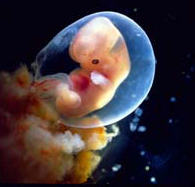
- no anatomic sexual difference
- bipotential gland
- in presence of hormones, gonad develops into
- testes (male)
- ovaries (female)
Early Views of Sex Determination
- Aristotle summarized that sex is determined from
- father’s temperature; and
- level of excitement
- during sexual intercourse
- Apparently, higher temp. and excitement produced boys
Advances?
- Sex and blending
- 1890s: sex determination during pregnancy and other environ. factors
- what about fraternal twins?
- fraternal twins: twins where one is boy, other is girl
20th Century: Study of Chromosomes
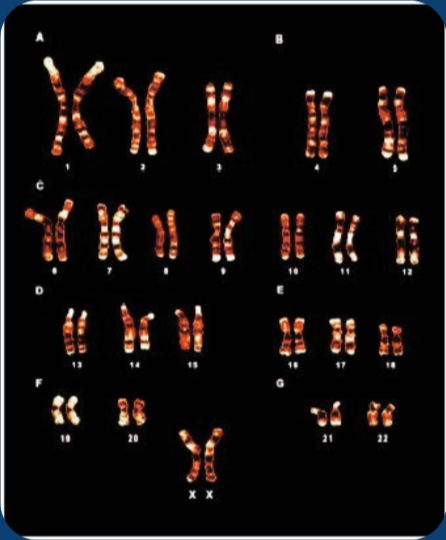
Chromosomes with XX sex pair
- hereditary roles of chromosomes understood
- 1916: fruit flies
- females: XX
- males: XO or XY (O is placeholder)
- 1923: human sex chromosomes discovered
Further Study
- 1959: Turner syndrome (XO)
- very skinny
- masculinized females
- Klinefelter (XXY)
- feminized males
- sex determined by presence of Y chromosome
Exceptions
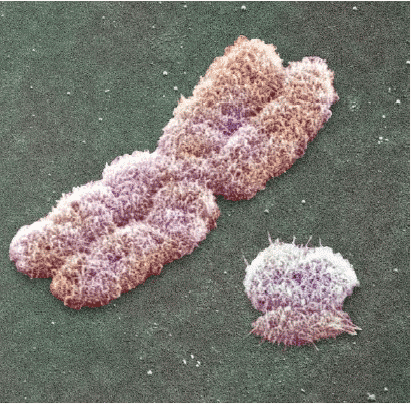
X chromosome (left) and Y chromosome (right)
- XX Male
- male sex structures
- no sperm / eggs
- XY Female
- female sex structures
- no sperm / eggs
- 1 / 20,000 individuals
Sex-Determining Gene
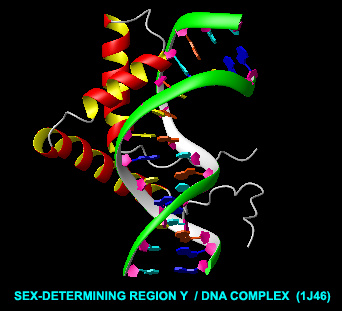
- XX male: carries part of Y on X
- XY female: missing SRY from Y
- Gene: Sex-determining region Y (SRY)
Further Test
- mouse experiment
- XX egg injected w/ SRY gene → transgenic egg
- implanted in uterus
- XX mouse born
- appears male
Y Chromosome
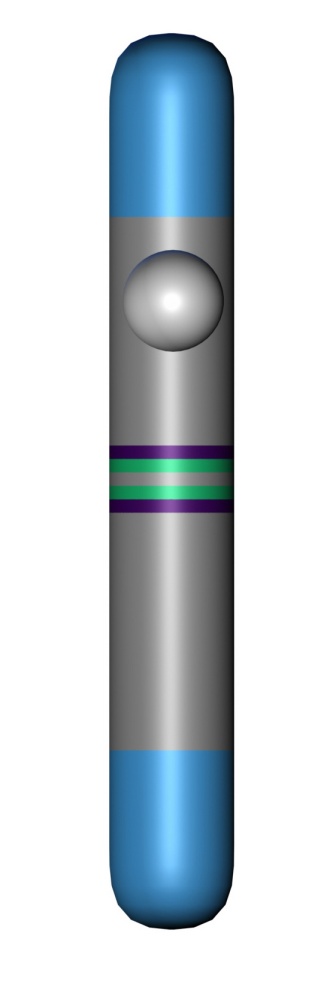
- broadly divided into 2 functional regions
- reg. 1: recombinant regions
- at extreme tips of chromosome
- reg. 2: non-recombinant region
- does not exchange genetic information with X
Y Clones
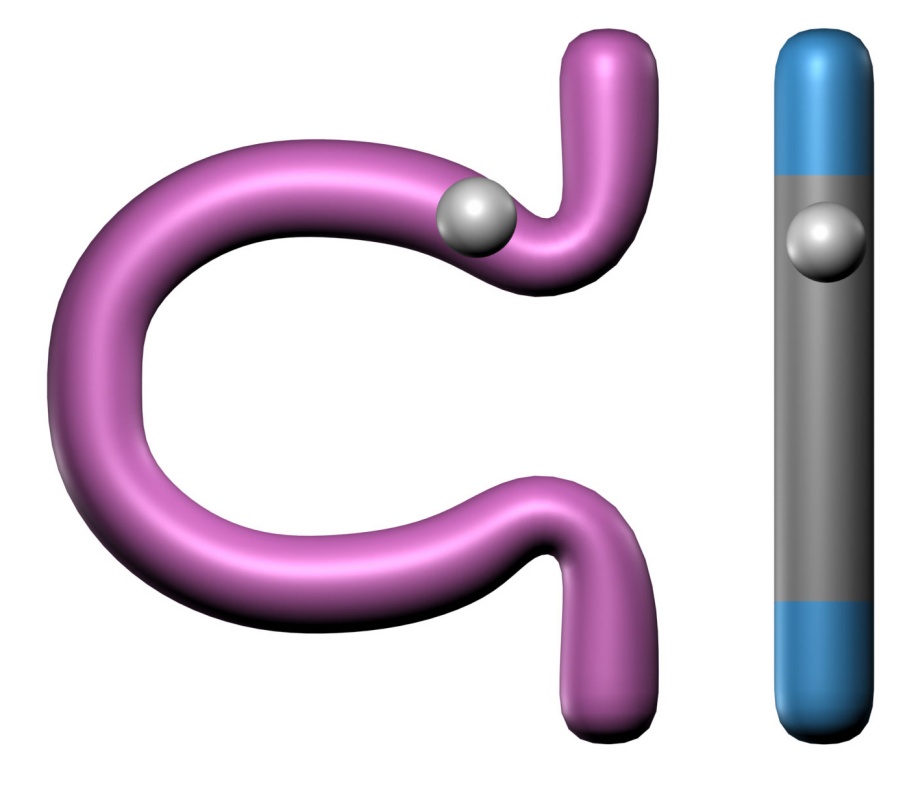
- Implications for inheritance of Y along male lines
- Y reproduced clonally
- Allows genetic analysis of male line
- Y-chromosomal Adam, 60 000 years b.p.
Genes on the Y
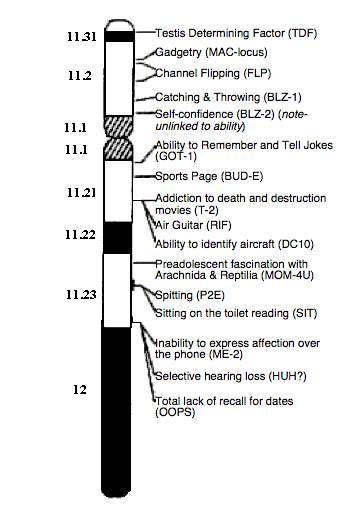
- contains other genes besides SRY
- cell housekeeping (16 genes)
- have counterparts on X
- sperm production
- i.e. DAZ
- 9 families
- total: 26 genes and gene families
- 1% of total genome
Evolution of Y Chromosome
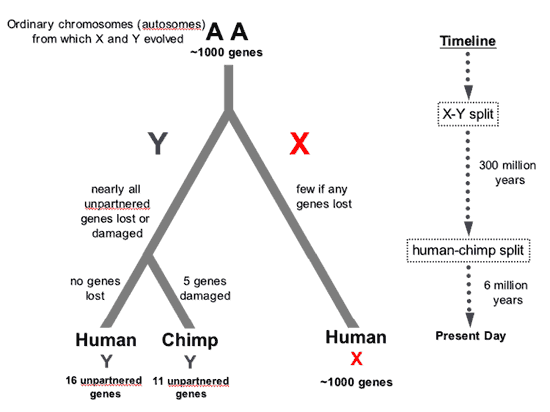
- sex determined by temp. in mammalian ancestor
- autosomes only
- X and Y nearly identical
- Y chromosomes 300 my in the making
Rise of SRY
- SRY arises as mutation in X
- SRY commandeers X autosome
- Y stops swapping genes w/ X
- proto X and proto Y
Development of Y
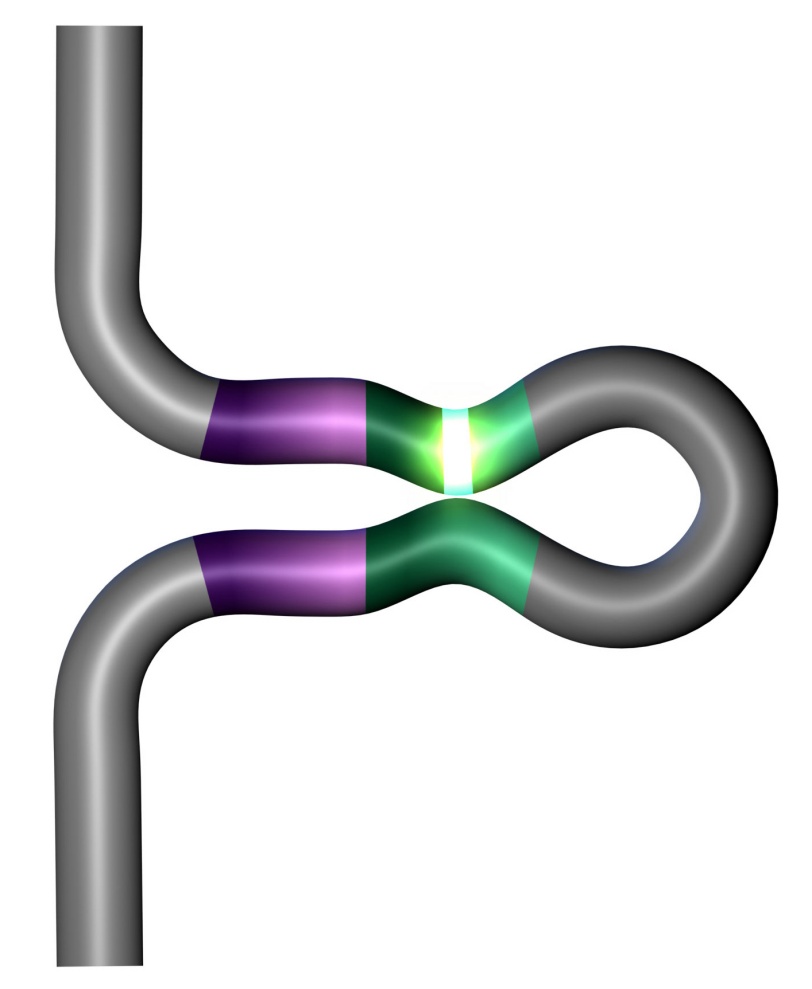
- Y undergoes series of inversions (internal recombination)
- results in removal of genes
- Y shortens
- cannot recombine w/ X (except at tips)
- Y periodically renewed by other autosome genes
- DAZL (spermatogenesis) gene donated from autosome
- now called DAZ
- 4 copies
Sex Determination in Other Animals
Reptiles
- ectothermic: cold-blooded
- temperature-dependent sex determination
- crocodiles
- warm temps: males ♂
- cool temps: females ♀
- turtles
- warm temps: females ♀
- cool temps: males ♂
Birds
- endothermic: warm-blooded
- ZZ: males ♂
- ZY: females ♀
- actual mode of sex determ. unclear
- may be analogous to mammals
Other Mammals
- endothermic
- monotremes: duck-billed platypus
- 10 sex chromosomes
- female: XXXXXXXXXX ♀
- male: YYYYYXXXXX ♂
- complex segregation during meiosis
Sex Determination in Mammals Evolutionarily
- Sex chromosomes necessary for mammals and other endothermic animals
- Mammals develop internally
- exceptions: platypus
- Confers advantage onto offspring
- Temperature-related sex determination impossible